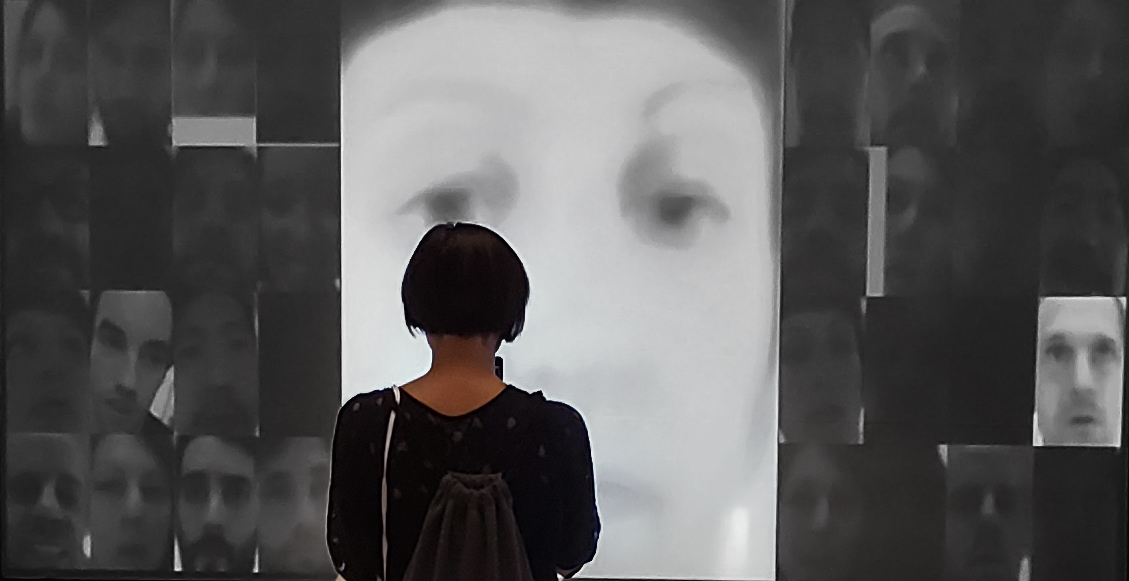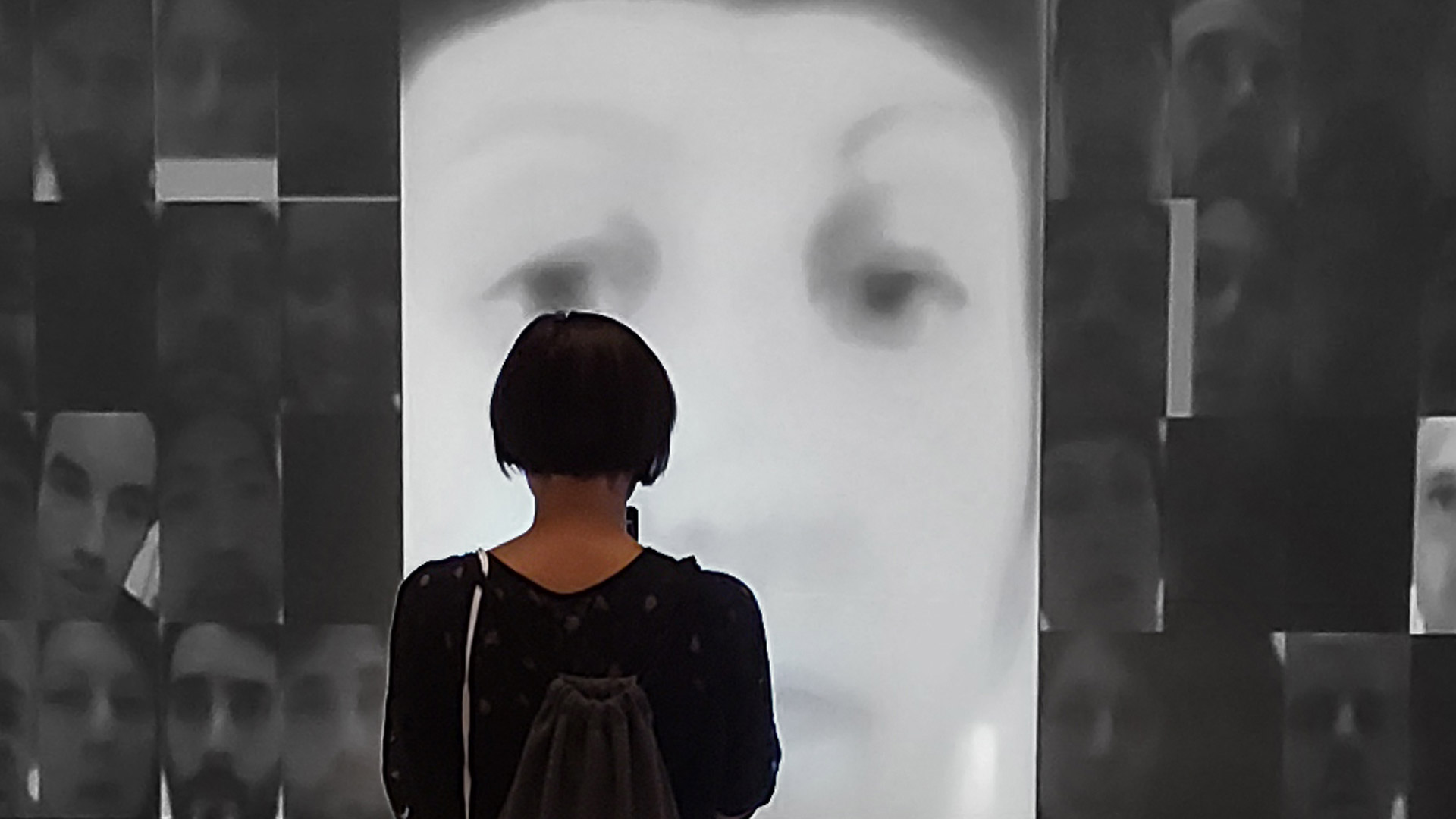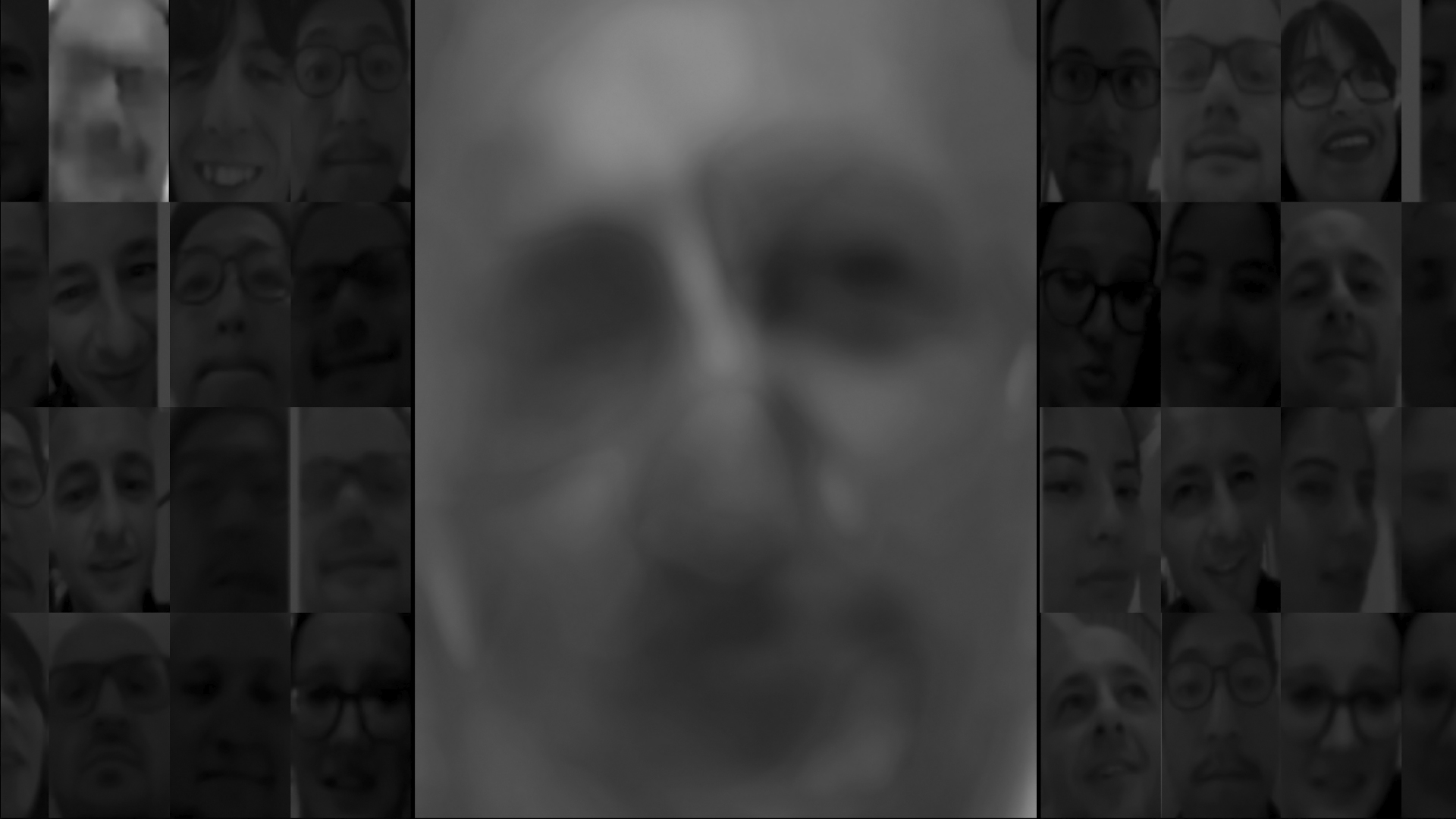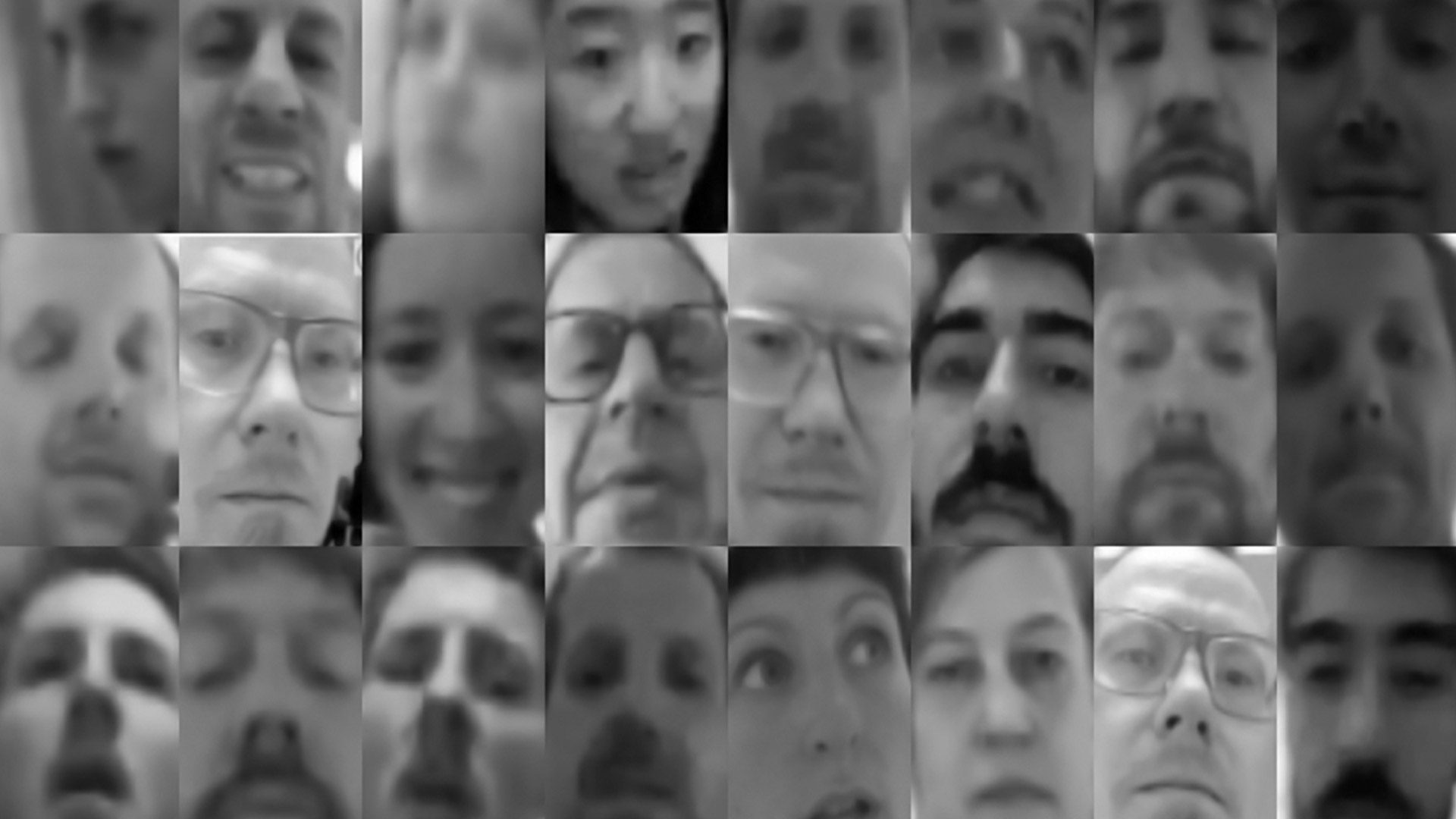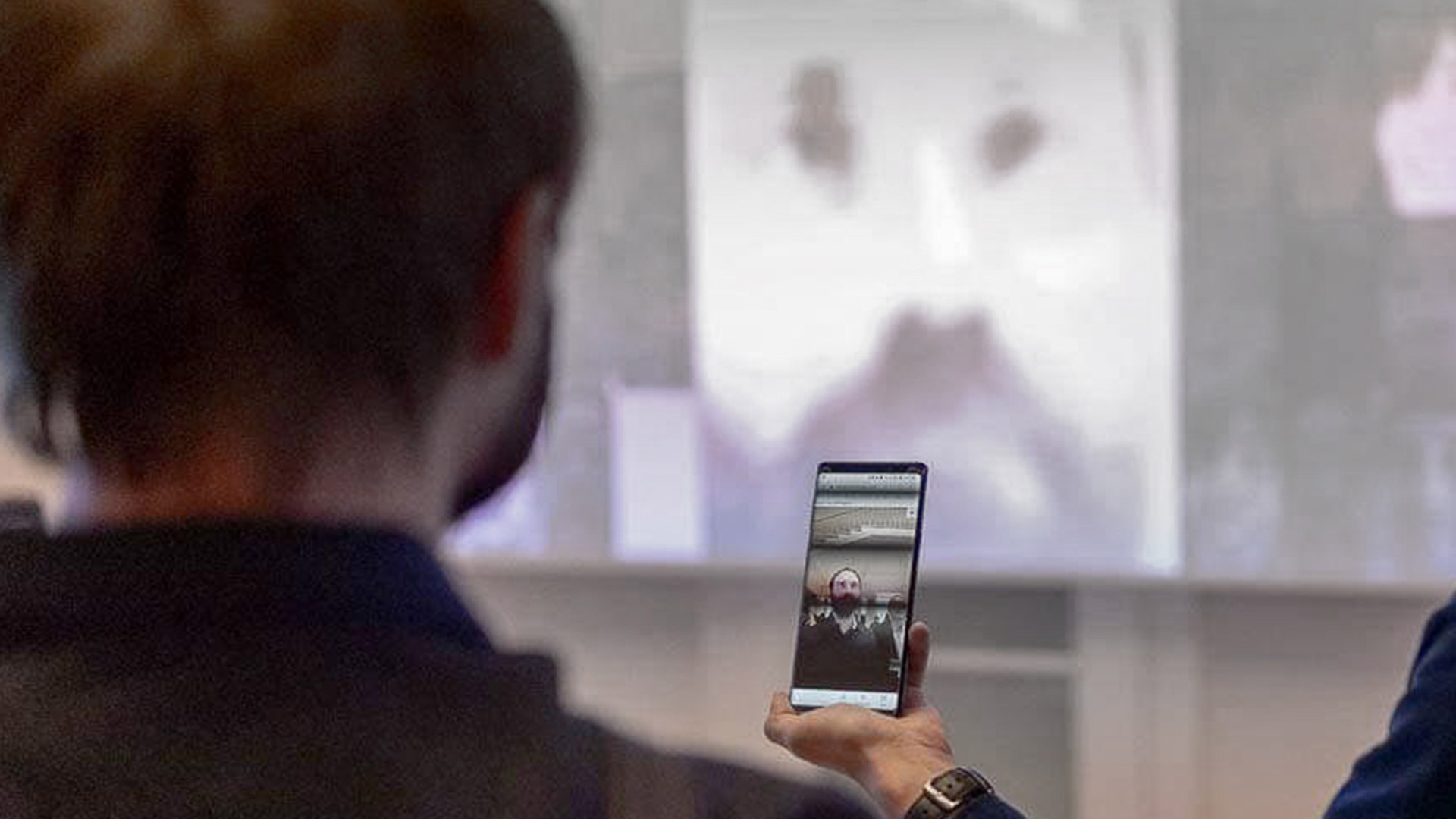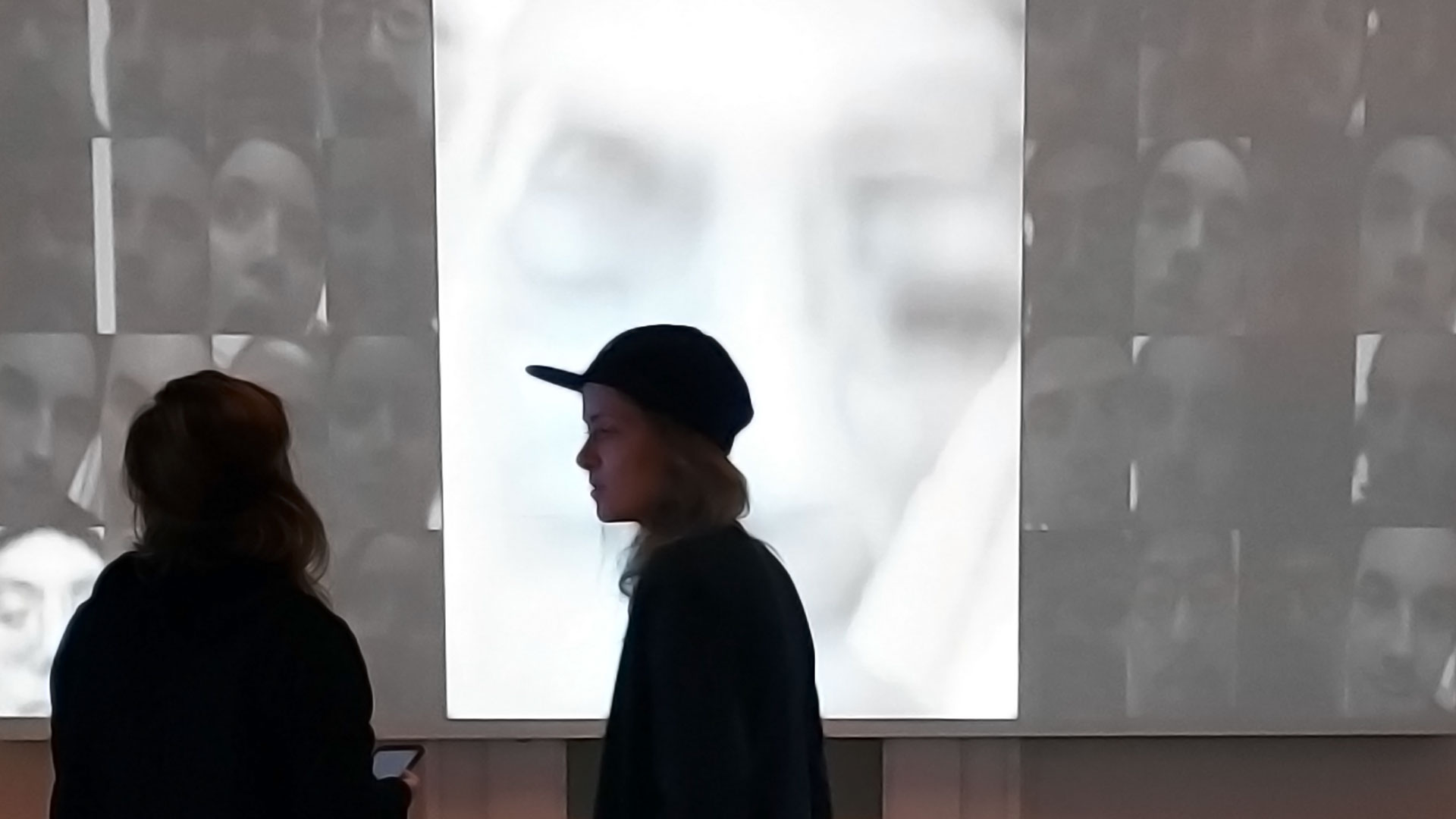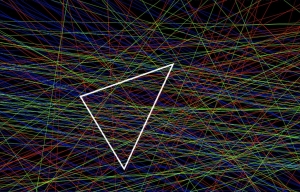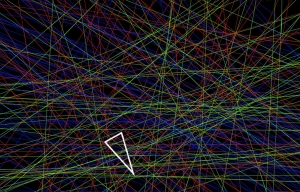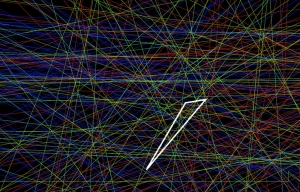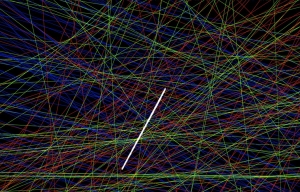interactive installation
CYNET art festival, Dresden, Germany 2018
HTML5, WebRTC, projector
For this work Nevertheless – interactive (2018), I designed a web-based interactive interface to raise the awareness of temporal visibility and recognition of social media and broadcasting media users by reconnecting fragments of their spatiotemporal existence. The viewer can join the web interface by scanning a QR code situated in the exhibition space. The web interface asks for access to the smartphone’s front-facing camera; then, it shows the user’s face at the center of the projection screen, which mirrors the smartphone screen. At the same time, each participant’s face is sequentially stored in one of the cells on a visual grid that fills the rest of the projection screen. The visitor first encounters the grid without knowing its purpose and use, as a collection of past and present participants on the web interface. Additionally, at times when no participant is connected, the central cell shows a looping animation of morphing faces from the other cells.
The visitor having to navigate this on their own is central to this work, which aims to encourage experiences of the introspective nature of the user-interactivity. Without instruction or purposeful narrative, this work intends to pull and tug at the viewer’s perception to shape the visual experience. This piece, which makes all spectators part of the work, offers itself as the experience of a mechanical device arising from the spatial experience of temporary immersion, as well as a multi-layered experience arising from the inclusion of a self-reflective narrative of strolling nomads in the digital era.
The smartphone screen becomes a kind of mirror, and this implies the arousal of narcissism. As if this work operates as an imperfect storage-device that repeatedly and continuously stores and deletes its data, audiences imagine and discover their shapes reflected together in a mirror, the temporal images of people who connect (or once connected) to the interface. Augmented by the virtual grid, the audiences secure visual perception and temporality and come to have temporary (therefore, more immersive) but mutual experiences while moving around the virtual and real spaces as visitors. Furthermore, aside from experiences for themselves, they also contribute to experiences for the other people who share the space with them.
